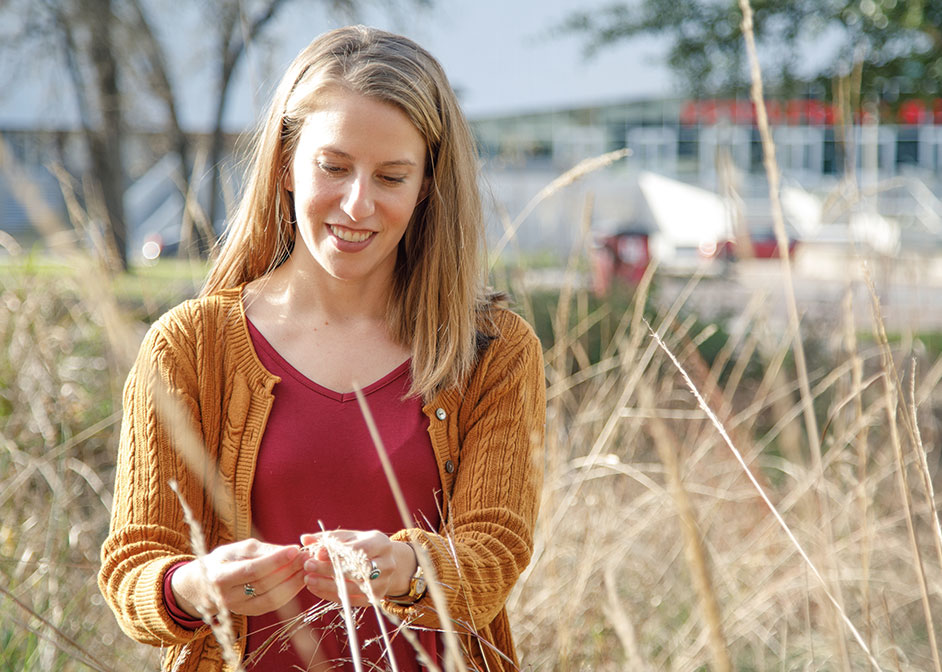Texas Ecolab Grant Supports Ph.D. Student Hannah Locke’s Research
From the smallest microorganism to the largest trees, ecosystems form a complex web of interactions. Some of these interactions are surprising, two links in a chain that appear unrelated but are tightly connected.

Soil Microorganisms and Eating Habits of Herbivores
Hannah Locke, a University of Houston Ph.D. student in biology, studies the connection between the microorganisms found in soil and the eating habits of herbivores. Locke is the recipient of a one-year, $8,000 Texas Ecolab grant, which will fund her research.
Although at first glance, a link between microorganisms and the eating habits of herbivores sounds tenuous, increasing evidence shows the two are connected.
“There is evidence that the microorganisms found in soil influence how plants protect themselves against pathogens and pest species that are trying to eat them,” said Locke, whose research is advised by assistant professor of biology and biochemistry Kerri Crawford. “Plants have deep relationships with everything in the soil.”
For protection, plants produce chemicals that taste bad, thus deterring herbivores, such as insects or deer, from eating more. Whenever an herbivore nibbles on a plant, this acts as a stimulus to produce more chemicals.
Microorganisms Help Plants Produce Chemical Defenses
Locke is looking at arbuscular mycorrhizal fungi, AMF for short, which is found associated with 80 percent of plant species worldwide.
AMF helps plants access important nutrients in the soil, while in turn, the host plants give AMF the sugars it can’t produce on its own. This is an arrangement between a fungi and a plant host that, when violated, turns into an antagonistic relationship.
“AMF can be described as a fair weather friend,” Locke said. “If one of them starts skipping out on their payments, then they start withholding resources from each other.”
Recent evidence suggests that AMF can alter the concentration and type of chemical defenses that plants produce, thus influencing the eating behaviors of herbivores.
“What’s happening below ground is somehow affecting these above-ground interactions, but no one has figured out the pattern,” Locke said.
Soil Microbes in Different Habitats
“The question I am trying to answer is, do different habitats lead to different microbial
partners, and do different microbial partners explain differences in plant-herbivore
interactions?” Locke said.
Previous studies have shown that plant-herbivore interactions, even between the same
species, differ depending on the type of habitat.
Locke is answering these questions with a series of experiments that look at soil microbes, primarily AMF species, in three different habitats – an open field, an area transitioning back to forest, and a mature forest. These field studies will then be followed up with controlled experiments, both in a greenhouse, as well as the UH Coastal Center.
“I think we’ve underestimated microorganisms,” Locke said. “Even things that are microscopic can have a ripple effect up the food web.”
Locke, the recipient of a Houston Endowment Recruitment Fellowship, won second-place in the NSM Hot Topics Competition, an annual event in which graduate students are given three minutes to present their research. She also tied for first place in the university-wide Graduate Research Showcase’s 3-Minute Thesis Competition.
- Rachel Fairbank, College of Natural Sciences and Mathematics